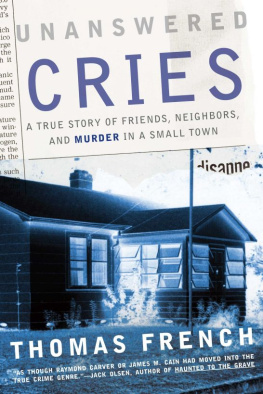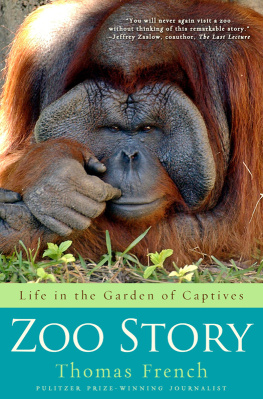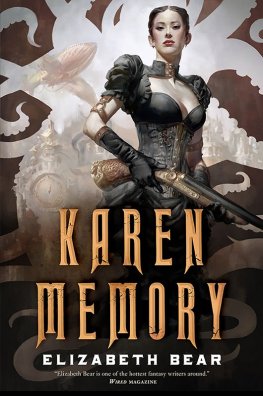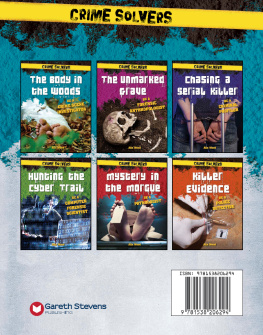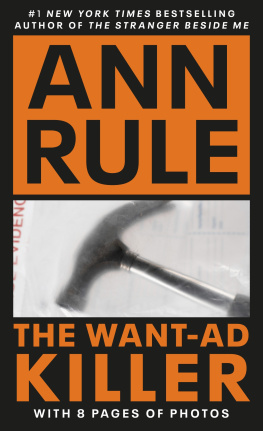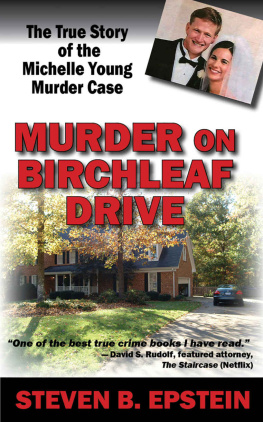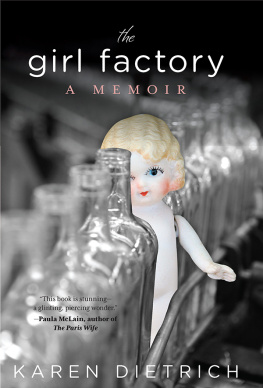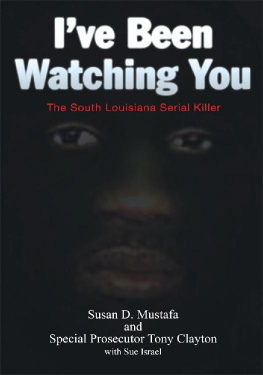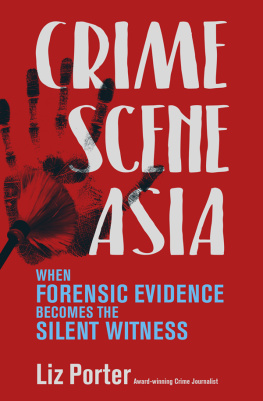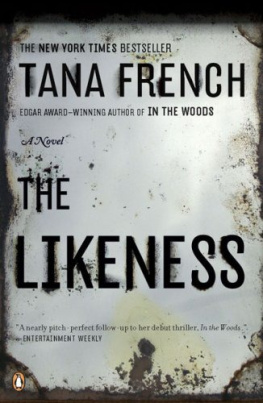EXTRAORDINARY PRAISE FOR UNANSWERED CRIES:
A story filled with dark truths about ourselves and our neighbors.
Carlton Stowers, author of Careless Whispers
A provocative account of how an ordinary murder transforms the lives of those connected to it in an extraordinary.
Alan Gelb, author of Most Likely to Succeed
A compelling true crime story with the pacing and suspense of a first-rate novel.
Ken Englade, author of Beyond Reason
Will immediately find a spot in the top rank of cant-put-em-down true crime books. Thomas French is a painstaking reporter and gifted writer who tells this sad story with great insight and sensitivity.
Jerry Bledsoe, author of Bitter Blood
Searches for the heart of darkness, and finds it next door.
Stephen Michaud, author of Only Living Witness
A powerful, gritty and true-to-life murder story. French captures the criminal justice system and gives it the strong and relentless shaking it so often deserves.
Maury Terry, author of The Ultimate Evil
UNANSWERED CRIES
A TRUE STORY OF FRIENDS, NEIGHBORS, AND MURDER IN A SMALL TOWN
THOMAS FRENCH
St. Martins Paperbacks
UNANSWERED CRIES
Copyright 1991 by Thomas French.
All rights reserved. No part of this book may be used or reproduced in any manner whatsoever without written permission except in the case of brief quotations embodied in critical articles or reviews. For information address St. Martins Press, 175 Fifth Avenue, New York, N.Y. 10010.
Library of Congress Catalog Card Number: 90-49299
ISBN: 0-312-92645-6
Printed in the United States of America
St. Martins Press hardcover edition/May 1991
St. Martins Paperbacks edition/March 1992
For Tad
Acknowledgments
S o many people have helped me with this book that I could not begin to list them all. Yet there are a number who deserve special thanksall of those close to Karen Gregory who shared such painful memories: Lu Redmond, who shared her invaluable insights; the officers of the Gulfport Police Department who shared their time and expertise; my agent, Jane Dystel, who had faith from the start; and my editor at St. Martins, Charles Spicer, and Associate Editor Bill Thomas, who gave me confidence and guidance.
What appears on these pages is based closely on articles I originally wrote for the St. Petersburg Times ; in fact, the book would not have been possible without the generous support of numerous people at the Times , including Sandra Thompson, Michael Foley, Andrew Barnes, Eugene Patterson, Don McBride, Rick Holter, Steve Small, George Sweers, Barbara Hijek, and everyone in the Times library. I also am indebted to George Rahdert and Pat Anderson for their counsel and heartening words; to Suzanne Klinkenberg for identifying the flora and fauna; to Kati Kairies of the Times Tallahassee bureau for cheerfully tracking down a dozen different addresses; to Frances Purdy of the Gulfport Historical Society, as well as to the societys book on Gulfport, for providing historical details; and to Terri McKaig for spending countless hours trying to explain to me the inner workings of the courts.
I have had the good fortune of knowing some of the best writers and writing coaches in the country, many of whom have given me their encouragement, suggestions, and friendship through several years of reporting and writing. Among them are Roy Peter Clark and Donald Fry of the Poynter Institute for Media Studies; Donald Murray, writing coach for the Boston Globe and other newspapers; Pat Meisol of the Baltimore Sun ; Tim Nickens of the Miami Herald ; Christopher Scanlan of the Knight-Ridder Washington bureau; and David Finkel, Anne Hull, Sheryl James, Jeff Klinkenberg, and Wilma Norton of the St. Petersburg Times . I am especially indebted to Karl Vick of the Times Washington bureau for all of his patience and advice. Deepest thanks to Neville Green, deputy managing editor at the Times , who always believed and was always there with the ablest hand. It is impossible to convey how much of Nevilles judgment and commitment run through these pages.
Finally, much love to my son, Nat, for lifting my spirits during hard times, and to my wife, Linda, for all of her proofreading, listening, and understanding.
AUTHORS NOTE
This is a work of nonfiction. All of the people, events, and details described in the book are real: there are no composite characters, fake names, invented quotes, or imagined conversations. The information was gathered over the past five years from interviews with more than seventy-five people and from more than six thousand pages of court documents, personnel files, and other records. Most of the quotes are taken from notes or transcripts of official proceedings, but by necessity some are reconstructions based on peoples recollections.
I have tried, as best I could, to depict the emotional trauma that follows the murder of a loved one. However, it is a limited depiction that only begins to describe the depth of grief and suffering involved in such a case. If you are among the thou sands of homicide survivors who are searching for help and understanding, I would encourage you to check with local victim organizations or with the victim advocate at the nearest police department to find out what services are available to assist you. In addition, there are several national organizations that may be able to provide support or referrals. Among these are the National Organization for Victim Assistance, 1757 Park Road NW, Washington, D.C., 20010, (202) 232-6682; the National Victim Center, 337 West Seventh Street, Suite 1001, Fort Worth, Texas, 76102, (817) 877-3355; and Parents of Murdered Children and Other Survivors of Homicide Victims, 100 East Eighth Street, B-41, Cincinnati, Ohio, 45202, (513) 721-5683.
Book One
She lay alone in the hall for a night and a day and another night. Finally someone saw her, and the police arrived and raised a circle of official yellow around the yard, and the neighbors stepped forward with their excuses, then retreated behind the walls of their front doors. The forensic experts came, and the forensic experts left, and at last the case was left in the hands of one who would not let go. During the day he would sit at his desk, examining and reexamining the photos of her on the floor, and ask her to help him see whatever he had missed. At night he would return to the house, wandering inside, hoping the empty rooms might reveal whatever they remembered. The weeks stretched into months. He eliminated one suspect after the other and ran down one blind alley after the other, and still he was no closer to understanding, until that day he stumbled across a single moment of stupid good luck. Then came the lie detector tests at the station, and the reenactments in the dark, and the anonymous phone calls that could not be traced, and the rounds of weary accusations and denials.
After all of that, he arrested a man and put him on trial for his life.
An investigator asked one of the neighbors:
Does he look like a murderer to you?
The neighbor said:
What does a murderer look like?
Part One
Ghosts
One
She might have stood a chance if she hadnt been living in a place where almost everyone is from someplace else. If Florida were not such a colony of impermanence, overflowing with people from other corners of the mapif more of them had been born and raised there, or at least learned to think of it as home and not just as some place to wait out the rest of their lives or hibernate for the winter or work on their tans until something better came along up norththen maybe the neighbors would have known more about the dark-haired woman moving into the house on the corner. Maybe they would have seen her emptying her car and carrying in the boxes, and then politely walked across the street with a cake or a fresh-baked loaf of bread, as neighbors back home are known to do, and introduced themselves and told her that if she ever needed anything, anything at all, to just come knocking. If a few of the neighbors had done that, if theyd taken the time to find out her name and memorize her face, then maybe one person would have picked up the phone and called the police that night when her scream woke them in their beds.
Next page
